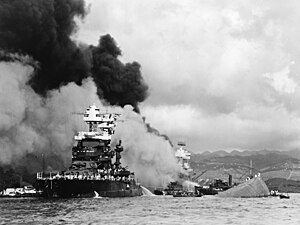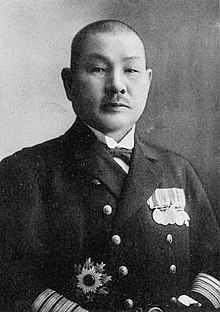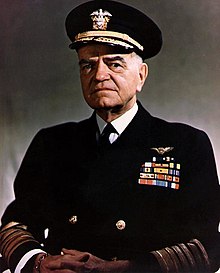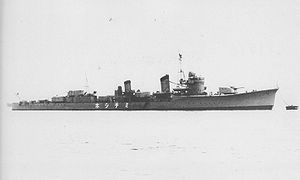The Battleship USS Arizona - 12/7/1941
Passed, but not quite over. In the sneak attack on the American fleet based at Pearl Harbor, anchored off Ford Island on what is known as Battleship Row, the USS West Virginia is sunk by two bombs and seven torpedoes, the USS California goes under from two bomb and two torpedo hits, the USS Tennessee is gravely wounded by two bombs, the USS Maryland is seriously damaged by two bombs, and the USS Pennsylvania is hit by one bomb, but unlike the others, remains in service. American ingenuity and spirit on display, all are back in service, with ship-wide upgrades and state-of-the-art weaponry by 1944, and serve in Admiral Chester Nimitz's island hopping campaign across the Pacific, mostly trying to soften up Japanese shore defenses prior to Marine or Army landings. October, 1944, finds the five battleships, plus the dreadnought, USS Mississippi, part of the support elements of General Douglas MacArthur's return to the Philippines by way of an American invasion of the island of Leyte.
USS West Virginia - 12/7/1941
_during_salvage_at_Pearl_Harbor_early_1942.jpg/512px-USS_California_(BB-44)_during_salvage_at_Pearl_Harbor_early_1942.jpg)
USS California - 1942 Refloat
USS Tennessee Between Sunken USS West Virginia And
The Smoking USS Arizona

USS Maryland Next To Capsized USS Oklahoma.
USS West Virginia Smoking In Background
USS Pennsylvania In Dry Dock Behind Ruins Of The
Destroyers, USS Cassin And USS Downes
A location the Japanese can not afford to lose or their supplies from Southeast Asia, the reason they went to war, will be cut-off, they respond with Fleet Admiral Soemu Toyoda's Sho-Go 1 "victory" plan in which a northern fleet of four aircraft carriers missing almost all of their planes and pilots, will be the juicy target to lure Admiral "Bull" Halsey's 3rd Fleet away from Leyte, opening the way for a pincer movement that will allow two different Japanese fleets to shoot up the American transports and invasion beaches at roughly the same time ... a desperate roll of the dice, the go ahead from Toyoda will result in the biggest naval battle in world history, a clash of over 200,000 men, 282 American, Japanese, and Australian ships that takes place for over four days and nights on more than a hundred thousand square miles of Pacific Ocean known as the Battle of Leyte Gulf. Part of the force that will guard the southern approaches to Luzon, the six battleships become part of Rear Admiral Jesse Oldendorf 7th Fleet Support Force watching the northern outlet of the narrow Surigao Strait leading to Leyte (additionally, the admiral has four heavy cruisers, four light cruisers, and a number of destroyers and PT boats he can call upon).

Toyoda

Halsey

Oldendorf
Advancing from the south are two Japanese attack forces, the lead element is under the command of Vice Admiral Shoji Nishimura and consists of two battleships, a heavy cruiser, and four destroyers, while the second force, roughly 30 miles behind, is under the direction of Vice Admiral Kiyohide Shima and composed of two heavy cruisers, a light cruiser, and four destroyers. By the time the Japanese reach the area of the Suriago Strait, the quarter moon has vanished into the sea and the stars are blotted out by clouds and overcast ... it is a pitch black evening, with blood hungry Americans waiting in the darkness (the Japanese had been spotted from the sky on their approach earlier in the day).


Nishimura & Shima
The Battle of Surigao Strait begins at 22:36 with the first PT boat (they are 77 feet long, weigh 45 tons, and are built out of wood, by contrast, Admiral Nishimura's flagship, the battleship Yamashiro, is 665 feet long, made of fortified steel, and weighs 29,797 tons) attacks on Nishimura's force ... an effort that will go on for over three hours as squads of three boats launch torpedoes, but are either chased away by Japanese guns before they can attain firing positions, or shoot misses (only one boat is lost, but many take hits and casualties) ... on north, the Japanese come.
The Battle Of Surigao Strait
Then it is the turn of the American destroyers. Not part of Oldendorf's original plan to protect the strait, he is convinced by the pleadings and plan of Captain J. G. Coward to let the tin cans of Destroyer Squadron 54 participate in the clash. Finding the Japanese force approaching in a column due to the narrowness of the strait, Coward and his five destroyers launch torpedo attacks from both the eastern (three vessels) and western (two vessels) sides of the strait (knowing the 5-inch guns of his destroyers are useless on the heavy armor of the approaching Japanese ships, and their gun flashes will give away their positions along the flanks of the column) just as a Japanese star shell ignites, lighting up the area in grey-white light, and Nisimura's force begins looking for opponents with green search lights. Torpedoes away (47 in all) and then the destroyers run as Japanese shells chase them, the night is suddenly brightened by a huge fireball, followed by several other detonations on the water. Then it is the turn of Oldendorf's Destroyer Squadron 24 and Destroyer Squadron 56, but not for long ... despite scoring several more hits, the admiral does not want his destroyers among the Japanese force when his cruisers and battleships are about to open fire and calls off any further assaults by his tin cans. In the strait, the battleship Yamashiro is on fire, as are several other Japanese ships, and the destroyer Michishio has been sunk ... and worse is coming as the Japanese column begins falling apart as it approaches the American line of cruisers and battleships.

Michishio - 1937
Crossing the "T" the most basic of naval battle maneuvers, either for single ships fighting each other or whole fleets, it is the favorite attack opportunity of all surface sailors because vessels that "cap" or "cross" the "T" can bring all their guns to bear on an enemy, while that enemy can only shoot his forward weaponry ... due to the configuration of the strait, Nishimura is the long column, and two rows of American cruisers and battleships are the top of the "T" as the destroyers clear the area. At a range of 26,000 yards, Oldendorf gives the order to "Commence Firing," and as commanded, the six-, eight-, fourteen-, and sixteen-inch guns of the American force open fire with devastating results ... including the Pearl Harbor survivors. It is battleship against battleship for the last time in history.
The USS West Virginia Firing On The Japanese
Fleet
Night Battle In The Surigao Strait
Caught In A Searchlight
Payback a bitch, in the resulting pounding by Oldendorf's ships (the USS West Virginia will get off 93 rounds of 16-inch shells, the USS Tennessee will fire 69 rounds, the USS California will fire 63 times, the USS Maryland will send 48 rounds Nishimura's way, and the USS Mississippi will fire a single round ... unable to locate a target, the USS Pennsylvania does not fire during the engagement) Nishimura's force is virtually destroyed (as is he, going down with the Yamashiro in the same seas that took his son Teiji earlier in the war), with only the cruiser Mogami and the destroyer Shigure able to flee the area despite their wounds ... just as the force of Shima arrives. Realizing he has entered a watery abattoir, Shima orders a launch of torpedoes at Oldendorf (none of which score a hit, two are found intact the next day, beached on a nearby island) and then wisely turns tail, but not before contributing to the chaos himself ... wildly maneuvering to avoid further torpedo and shell strikes, the Mogami collides with Shima's flagship, the cruiser Nachi, and slowed by its many injuries, the Mogami will be sunk by naval flyers the next day (in only a matter of weeks, the balance of Shima's command will be sunk in other engagements). Revenge sweet for the Americans, at the slight cost of one PT boat sunk, several damaged, and one destroyer severely hurt, for trying to break through the strait, the Japanese have lost two battleships, three cruisers, and four destroyers.
Plucking A Japanese Survivor From The
Sea - 10/25/1944
The Battle of Surigao Strait over, but not yet the Battle of Leyte Gulf ... Halsey has indeed gone after the carriers of Vice Admiral Jisaburo Ozawa leaving the San Bernadino Strait above Leyte open for a Japanese excursion which is coming in the form of four battleships (with group leader Kurita aboard the biggest battleship ever made, the Yamato), six heavy cruisers, two light cruisers, and eleven destroyers. A wolf among sheep about to feast on lightly armored escort carriers, destroyers, escort destroyers and invasion transports, instead of slaughter, compliments of the destroyer USS Johnston, the smaller destroyer escort USS Samuel B. Roberts, the destroyer USS Hoel, the destroyer USS Heermann, and countless sorties by naval fliers in the region, the sure defeat coming will instead be transformed into perhaps the most glorious day in United States Navy history!

The USS Johnston Attacks
No comments:
Post a Comment